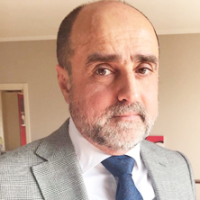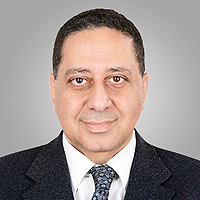Clinical profile, prognosis and post COVID-19 Illnesses among attendants to private general practitioner (GP) clinic at Urban Amman Area: a clinical case-series study
Published on: 4th March, 2023
Background: The clinical manifestations of Corona Virus Disease of 2019 (COVID-19) varied from patient to patient with evidence of multi-organ involvement. Many patients continue to have a wide range of symptoms for variable periods of time. The long-term effects of COVID-19 infection (post-COVID-19 illness or syndrome) are not yet been fully explored.This study aims to highlight the clinical manifestations of the acute COVID-19 infection and the longer-term manifestations of the disease among the attendants to a private GP clinic in the Urban Amman Area, Jordan.Methods: A clinical case-series study was conducted on a sample of 300 COVID-19-positive cases among patients attending my private GP clinic in the Urban Amman Area, Jordan. We used the structured questionnaire based mainly on World Health Organization (WHO) Case Report Form (CRF) verified tool for post-COVID-19. All patients with COVID-19 were included in the study. Data collection was conducted through phone calls and analyzed using the Statistical Package for Social Sciences (SPSS) software. Results: The incidence of COVID-19 among patients attending the clinic during the period of this study was 25%. Females were 135 (45%) of the study population and males were 165 (55%). The mean (SD) of age was 34.2 (5.0) years. Most of the infected staff (90%) were symptomatic and developed acute COVID-19 symptoms. Fever, Cough, Fatigue, joint pain and loss of smell and taste were the most common symptoms. 72% of the study population had fully recovered from the infection, while 28% of them continued to suffer from many long symptoms. Fatigue (28%), shortness of breath on activity (18%), Social withdrawal (18%), anxiety (17%), forgetfulness (16%), trouble concentrating (15) and depressed mood (14%) were the most frequently reported long symptoms.Conclusion: The prevalence of Post COVID-19 illness was 28% with a high public health burden calling for the public health system to address the medical and psychological needs of affected persons. Mental health and psychosocial support are recommended elements for the management of patients.
Hypersexual Disorder: A Comprehensive Review of Conceptualization, Etiology, Assessment and Treatment
Published on: 6th September, 2023
Hypersexual disorder, also known as compulsive sexual behavior or sex addiction, is a complex and clinically significant condition characterized by intense and recurrent sexual fantasies, urges, or behaviors that significantly disrupt an individual’s daily life and overall well-being. Despite its importance, hypersexual disorder remains a controversial and debated topic, lacking standardized diagnostic criteria in major classification systems.This review paper provides a comprehensive examination of hypersexual disorder, encompassing its definition, conceptualization, etiology, co-occurring conditions, effects on mental and physical health, assessment, treatment approaches, cultural and ethical considerations, and future research directions. By synthesizing information from existing literature and research, this review aims to deepen our understanding of hypersexual disorder and contribute to the development of evidence-based interventions.The review begins by exploring the evolution of the term “hypersexual disorder” and its current status in diagnostic classifications. It then delves into the potential etiological factors contributing to the development of hypersexual behaviors, including neurobiological, genetic, and psychosocial factors.Furthermore, the review discusses the common comorbidities associated with hypersexual disorder, emphasizing the importance of addressing co-occurring mental health conditions in treatment planning. The psychological and physiological effects of hypersexual behaviors on affected individuals are examined, underscoring the urgency of early intervention and comprehensive treatment.The assessment and diagnosis of hypersexual disorder are thoroughly examined, considering the challenges and methodologies involved in identifying and evaluating affected individuals. Cultural and ethical considerations are highlighted, stressing the significance of providing culturally sensitive and ethical care to diverse populations.In the context of treatment, the review discusses various therapeutic approaches, including psychotherapy, medication, support groups, and harm-reduction strategies. The need for evidence-based treatments tailored to hypersexual disorder is underscored while recognizing the challenges of developing standardized protocols in this evolving field.Finally, future research directions are outlined, focusing on the standardization of diagnostic criteria, prevalence studies, neurobiological investigations, and the integration of cultural competency in treatment approaches.In conclusion, this review paper aims to contribute to a comprehensive understanding of hypersexual disorder and its implications for affected individuals and society. By exploring the multifaceted aspects of the condition, this review seeks to provide insights into effective treatment approaches and inspire further research in the study of hypersexual disorder.
Case – Late Presentation of Invasive Keratinizing Squamous Cell Carcinoma
Published on: 27th December, 2023
Penile cancer, a rare but highly morbid disease, primarily manifests as squamous cell carcinoma (PSCC) originating from the squamous cells of the glandular and preputial skin. Late-stage diagnosis is common due to social stigma, psychological barriers, and nonspecific initial symptoms, resulting in poor overall survival rates, especially in metastatic cases. This case report illustrates a 38-year-old man with advanced metastatic PSCC, showcasing severe systemic manifestations and delayed presentation of the disease. Despite aggressive treatment options, the patient opted for palliative care, succumbing to the disease months after his diagnosis. Risk factors for PSCC include HPV infection, phimosis, chronic inflammation, and lifestyle factors, with higher prevalence in regions of low socioeconomic status. The psychological and sexual burden of penile cancer is significant, impacting patients’ well-being, mental health, and quality of life. In conclusion, efforts to reduce the stigma associated with penile cancer are crucial to prompt early diagnosis and treatment initiation. Encouraging seeking medical attention for symptoms can enhance the chances of recovery and minimize the need for invasive treatments. Addressing the psychosocial impact of the disease is imperative for holistic patient care.
Bimatoprost Ophthalmic Solution (BOS) 0.3 mg w/v for 1 Open Trial of Long-term Preventive Therapy of Migraine in 3 patients with Pathophysiologic Shift from Brain to Eye
Published on: 9th November, 2023
Known since antiquity, migraine is a complex primary disorder, an episodic painful Autonomic Nervous System (ANS) storm, generally following the stress/post-stress phase. Despite exhaustive study of neuropeptides, neurochemicals, molecules, neurogenetics, neuroimaging along with animal and human experiments over the last 50 years, the scientific basis of migraine remains unknown. Straddling eight decades from Cortical Spreading Depression (CSD) to Calcitonin-Gene Related Peptide (CGRP) and its antagonists, exponentially increasing data have failed to create a gestalt synthesis. This article lays cohesive and robust fundamental principles for the comprehension and management of migraine. The continuum between migraine and non-congestive Primary Open-Angle Glaucoma (POAG), Normal Tension Glaucoma (NTG), or Low-Tension Glaucoma (LTG) is advancing. The case of sustained remission of migraine attacks (> 75%) over 3 years - 5 years with ocular hypotensive topical Bimatoprost Ophthalmic Solution (BOS) 0.3% in an N-of-1 trial in 3 patients with refractory migraine is presented. A cause-effect-adaptive process underlies the ANS-stress/post-stress-linked biology of migraine. Vasopressin-serotonin-norepinephrine ‘homeostatic-adaptive system’ Lowers Intraocular Pressure (IOP), while enhancing anti-stress, antinociception, vasomotor, and behaviour control functions, thereby selectively decreasing algogenic neural traffic in the ophthalmic division of trigeminal nerve (V1), and, raising the threshold to develop migraine. Striking migraine headache-aborting feature of vomiting is also likely linked to a several hundred-fold increase in arginine-vasopressin secretion. Eye-cover tests and self-ocular digital displacement are essential to studying the visual aura. Real-time physical displacement of Scintillating Scotoma (SS) and floating ‘stars’ is reported. The basis of spontaneous onset and offset, self-limited duration of migraine attacks, as well as female preponderance, and age/menopause decline in prevalence, are elucidated. Intraocular implants with long-term ocular hypotensive effects, including bimatoprost, are the future of migraine management. Controlled trials are required to establish the migraine-preventive effect of topical bimatoprost, a revolutionary advance in neuroscience.
Mapping the Psychosocial: Introducing a Standardised System to Improve Psychosocial Understanding within Mental Health
Published on: 9th February, 2024
Objective: Psychosocial approaches are increasingly being advocated as an efficacious means of addressing mental health problems. However, with a multitude of complex and varying interpretations present with the use of the term ‘psychosocial’ / ‘psycho-social’ in contemporary discussions of mental health, its application can be vague and even contradictory. This presents problems for research to inform practice and practice to inform research, ultimately inhibiting the help given to those suffering. Method: Literary review, reflecting an extended period of 10 years, explores and analyses the use of the terms ‘psychosocial’ and ‘psycho-social’ within a mental health context. Results: This article identifies that applications and use of the term psychosocial vary significantly, with two models being primarily evident in mental health applications: a multidisciplinary and interdisciplinary model. Conclusion: A standardised system is established for mental health theorists and practitioners to identify and categorise these different applications. This outcome is intended to lead to a better understanding of different psychosocial applications, provide better communication between existing psychosocial applications, and improve clarity for future instruction.
Changes in Private Psychiatric Outservice Related to SARS-CoV-2 Pandemic
Published on: 8th November, 2024
The SARS-CoV-2 pandemic, which began in late 2019, initially manifested with acute respiratory symptoms, including bilateral pneumonia, and later emerged as a systemic disease. This brief report assesses changes in the clinical profiles of psychiatric outpatients before, during, and after the pandemic’s most severe periods, focusing on mood, anxiety, and cognitive symptoms. Data from a private psychiatric facility in Rome reveal that both pandemic-related stressors and SARS-CoV-2 infection itself may contribute to enduring affective and cognitive symptoms in both older and younger adult subgroups. Notably, during the pandemic, older patients showed elevated psychopathology scores (BPRS-24) compared to younger individuals. In the post-pandemic period, younger adults exhibited increased positive symptoms on the PANSS Positive subscale, suggesting a gradual worsening in symptoms post-pandemic ( = 0.47). Cognitive assessments (MMSE and PM38) further highlighted fluctuating performance over time, with older adults showing two distinct declines during the pandemic and in 2024. This work underscores the importance of sustained mental health interventions to address the pandemic’s psychosocial and neuroinflammatory legacy. This perspective also considers new data on the CNS effects of “toxin-like peptides” synthesized by microbiome bacteria.
















